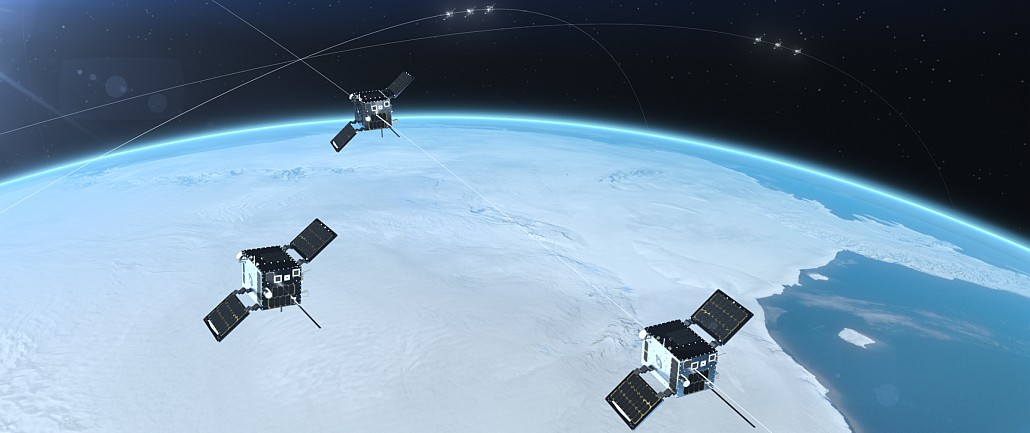NoVa satellite company HawkEye 360 just made its latest move among the stars.
The Herdon, Virginia company, which measures space-based radio frequency data and analytics, announced the launch of its Cluster 5 satellites yesterday. The cluster took off from a SpaceX Falcon 9 rocket stationed in Cape Canaveral in Florida. The new launch expands HawkEye’s satellite constellation to 15 satellites in total — the company has a long-term goal of 60 satellites in orbit.
According to HawkEye, the launch will also help the constellation to monitor hard-to-reach places like Ukraine. Senior product marketing director Adam Bennett told Technical.ly that its technology, which can look at things like GPS interference, is part of a huge push to gather as much information from the region as possible.
“There’s been no war before ever with this level of detail and intensity of data that’s being provided, at least publicly, for people to be aware of and understand what’s going on,” Bennett said. “War is often very confusing, very difficult, so this type of data is very beneficial. ”
The new cluster includes antenna functions introduced with HawkEye’s last cluster, which launched in April, and enables more flexibility in detecting and geolocating signals across more frequencies. Cluster 4, the fourth set of satellites that HawkEye launched, is set to achieve operating capacity in June; Cluster 5 is expected to come online soon after in August. Together, they’ll double HawkEye’s on-orbit capacity, but the company is hoping for two more cluster launches (with three satellites in each cluster) before the end of the year.
According to HawkEye, the additional launches will help keep the company on track as it gradually grows the size of its constellation. It’s looking to achieve revisit rates (how often the satellites check in on an area) of approximately 15 minutes as it pushes forward.
“Every enhanced satellite cluster we launch helps us deliver a higher density of valuable data to our government, commercial and humanitarian customers and partners – advancing our efforts to monitor global activities for a safer and more secure world,” said HawkEye 360 CEO John Serafini in a statement. “Launch by launch, these space-based innovations are analyzing the knowns and uncovering the unknowns of the RF spectrum across the globe.”
This latest push follows a strong period of growth for HawkEye. In January, the company added another $5 million from Leidos to a $145 million round it raised in November, which had brought its valuation up to $895 million. In April of 2021, it raised $55 million in a Series C, which followed a $70 million Series B in August of 2019. The company was also awarded two government contracts since January of this year.
Bennett said that last year’s raises have supplied a large portion of the costs for the ongoing expansion of satellites and clusters. On the ground, it’s expanding staffing and adding new talent to help better analyze and produce more analytics of its data.
“The goal is to make it as easy as possible for our customers to be able to use the information without necessarily having to be a radiofrequency expert,” Bennett said. “We’re trying to democratize the data and make it so that many people as possible, if they just know basic datasets and mapping programs and things like that, can still make use of the data.”







